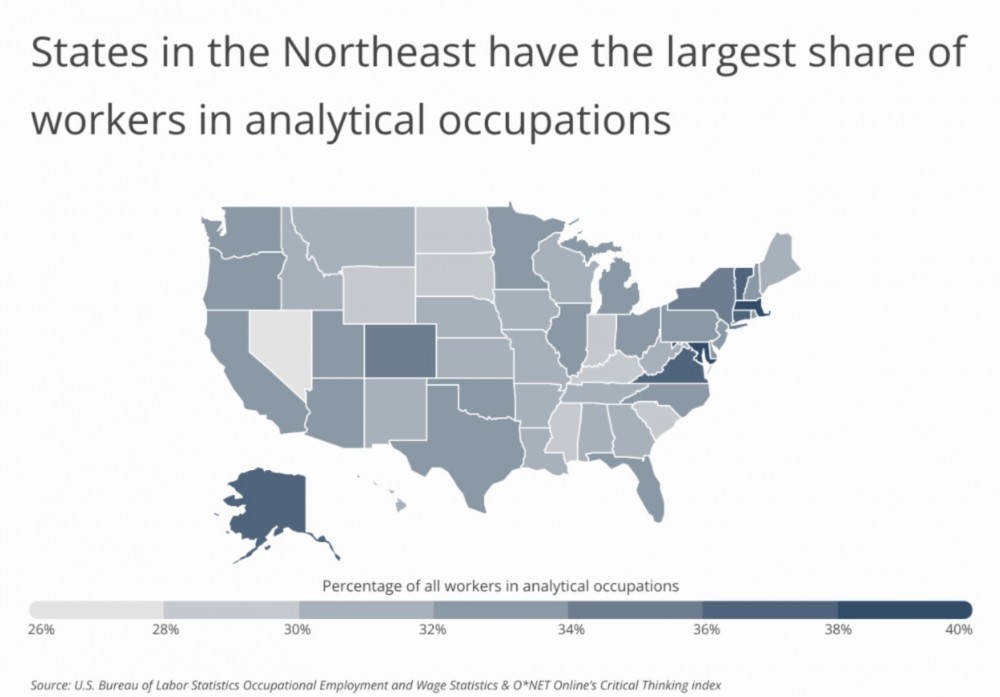After major breakthroughs in the field of artificial intelligence in recent years, AI is quickly becoming an everyday presence in people’s lives. The release of generative AI tools like ChatGPT, DALL-E 2, and Stable Diffusion in 2022 captured public attention and demonstrated AI’s potential in intuitive ways. In response, tech giants like Microsoft, Alphabet, and Meta are racing to incorporate new AI technology into their popular products.
Despite the exciting possibilities for AI and machine learning, these emerging technologies have also raised fears of job displacement. These tools have the potential to perform many tasks that were previously thought to be more difficult to automate, from design to customer service to computer programming.
But concerns about automation are nothing new, and history has shown that while technological innovation does eliminate some jobs, it also frequently creates new roles requiring different skill sets. For instance, digital automation from the invention of computers and the internet made many production and clerical occupations obsolete. At the same time, the digital revolution created well-paid jobs for highly educated analytical workers who understand and know how to leverage new technology.
In today’s digital economy, these types of analytical jobs have become increasingly important and are likely to remain so as more businesses rely on technology. Twenty years ago, analytical workers—defined as those in occupations that rank in the top 50% for O*NET’s Critical Thinking index—represented 29.4% of workers in the economy. That figure today is 33.8%, down slightly from its 2020 peak of 35.6%.
While needs for analytical workers have grown across the economy, demand for critical thinking skills has been especially high for certain fields. Roles in business operations and management have shown the highest rate of growth over the last decade. These fast-growing analytical occupations include market research analysts, financial examiners, and human resources managers, which all saw total employment more than double from 2011 to 2021. Meanwhile, the occupation general and operations managers saw total employment grow by more than one million workers over the same span, becoming the second largest analytical occupation.
Geographically, demand for workers in analytical occupations depends on factors specific to state and local economies. States like Massachusetts, Maryland, and Connecticut have the highest shares of workers in analytical occupations, a byproduct of high educational attainment in their populations and industry makeups that require more analytical workers. At the opposite end of the spectrum is Nevada, a state where much of the economy is linked to hospitality and the service industry, where analytical skills are less in-demand.
Similarly, most metros with higher-than-average concentrations of analytical workers are cities with highly educated workforces and economies based in industries heavy in analytical needs like tech, financial services, law, and other big business. In the nation’s leading metro for analytical workers—the Washington, D.C. metro—nearly half of the population works in occupations that depend heavily on critical thinking skills.
The data used in this analysis is from the U.S. Bureau of Labor Statistics as well as O*NET Online. To determine the locations with the most analytical workers, researchers at Smartest Dollar calculated the percentage of all workers in analytical occupations—or occupations that rank in the top 50% for O*NET’s Critical Thinking index. In the event of a tie, the location with the greater total workers in analytical occupations was ranked higher.
Here is a summary of the data for Tennessee:
- Percentage of all workers in analytical occupations: 30.8%
- Concentration of workers in analytical occupations (compared to average): -8.9%
- Total workers in analytical occupations: 920,300
- Total workers in non-analytical occupations: 2,066,540
For reference, here are the statistics for the entire United States:
- Percentage of all workers in analytical occupations: 33.8%
- Concentration of workers in analytical occupations (compared to average): N/A
- Total workers in analytical occupations: 47,664,140
- Total workers in non-analytical occupations: 93,222,170
For more information, a detailed methodology, and complete results, you can find the original report on Smartest Dollar’s website: https://smartestdollar.com/research/cities-with-the-most-analytical-workers-2023





